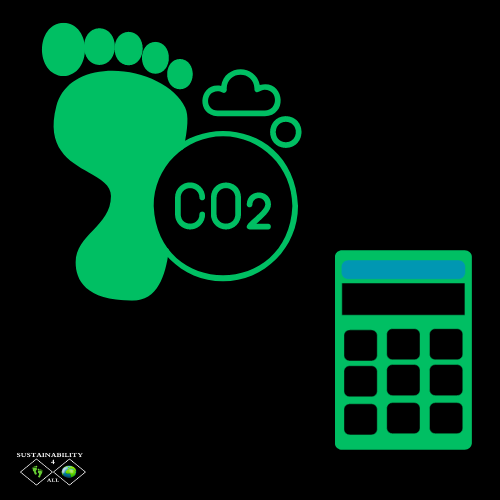"Eco-Efficient Living: Your Ultimate Guide to Calculating and Reducing Carbon Footprints"

.
A therm is a heat energy unit commonly used to measure natural gas consumption. One therm equals 100,000 British thermal units (BTUs) or approximately 29.3 kilowatt-hours (kWh). For example, if you have 5 therms and want to convert it to kilowatt-hours, you would multiply: 5 therms×29.3 kWh/therm=146.5 kWh
Solutions for High Carbon Emissions
Households and businesses can implement several practical measures to reduce their carbon emissions. For each of the carbon footprint calculator's input categories, here are some individualised solutions:
1. Annual Mileage
Promote the utilisation of sharing vehicles, public transport, cycling, or walking as frequently as feasible.
Encourage the adoption of remote work choices to minimise the necessity of daily travel to work.
Consideration for fuel-efficient or electric vehicles (EVs) to minimise emissions from personal and corporate travel.
Consideration for fuel-efficient or electric vehicles (EVs) to minimise emissions from personal and corporate travel.
2. Annual Electricity Consumption (kilowatt-hours)
Energy efficiency refers to the ability to use energy in a way that minimises waste and maximises output. Invest in environmentally friendly appliances, LED lighting, and automated thermostats.
Renewable Energy: Convert to renewable energy sources by installing solar panels or buying grid-supplied green energy.
Perform energy audits to discover and reduce inefficiency in energy usage.
3. Annual consumption of natural gas in therms
Enhance the insulation and sealing of your home or business to minimise heating requirements and prevent leaks.
Energy-efficient appliances: Invest in high-efficiency heating systems and water heating systems.
Consider alternate heating options such as electric heat pumps or solar-powered water heating.
4. Household Members Promoting Knowledge and Learning:
Instruct family members or staff members on energy-conservation techniques and the significance of minimising carbon emissions
5. Weekly Food Consumption
Advocate for the reduction of meat consumption, specifically red meat, because of its significant carbon impact.
Encourage the consumption of plant-based meals, including fruits and veggies, legumes, and grains.
Sustainable Sourcing: Settle for food that comes from sustainable sources and is locally produced to minimise the emissions generated by transportation.
6. Food Source (Domestic or Imported)
Optimise your purchases by prioritising local and seasonal goods to minimise the environmental impact of food transport.
Participate in Community-Supported Agriculture (CSA) programmes to acquire fresh, locally produced goods directly from farmers.
7. Beverage Bottles
Minimise and Decrease the usage of one-time-use plastic bottles by utilising reusable bottles and promoting bulk buying.
Enhance recycling programmes to guarantee correct disposal and recycling of beverage containers.
8. Management of Organic Waste and Recycling
Engage in composting as a means to diminish methane emissions originating from landfills and generate fertile soil enriched with nutrients for gardening purposes.
Waste Minimisation: Employ waste minimisation tactics such as purchasing items in large quantities, utilising reusable packaging, and strategically meal planning to prevent food waste.
Enhanced Recycling: Enhance recycling endeavours by accurately categorising recyclable materials and minimising impurities in recycling containers.
Additional comprehensive solutions
1. Carbon Offsetting Acquire Carbon Offsets:
Support carbon offset initiatives that finance projects such as forest regeneration, renewable power, or methane capture to counterbalance emissions.
2. Behavioural Changes
Adopt environmentally conscious habits, such as switching off lights when not in use, utilising water-saving devices, and minimising overall consumption.
3. Green Certification Certifications for Sustainability:
Consider pursuing green certifications such as LEED for buildings or B Corp certification for businesses to showcase dedication to sustainability and ongoing enhancement.
4. Policy and Advocacy Advocacy:
Support and champion the implementation of sustainability, renewable energy, and carbon management strategies through the promotion of local, regional, and national policies.
5. Participation in the community
Participate in or provide assistance to community initiatives focused on sustainability, such as afforestation, communal horticulture, and local clean-up endeavours.